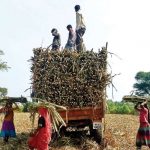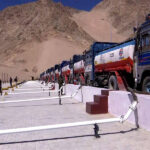Widespread flooding in Pakistan’s Punjab province has submerged more than 2.2 million acres of farmland, dealing a severe blow to the country’s agricultural economy, according to a report by Samaa News on Wednesday.
Among the worst-hit crops is rice, with losses estimated at over 1 million acres of standing crop. Citing provincial authorities, the report highlights that sugarcane, corn, and cotton have also sustained extensive damage. Around 2.5 million acres of sugarcane fields have been affected, while corn and cotton crops have faced widespread destruction.
In Sindh province, although the flooding impact has been less severe, up to 3% of the onion crop has been damaged, particularly in the low-lying Kachha areas.
In response to the crisis, the federal government has decided to engage international organisations, including UN agencies, to conduct damage assessments and determine recovery needs. A high-level meeting chaired by Planning Minister Ahsan Iqbal, and attended by the Finance Minister and NDMA officials, concluded that an initial loss assessment will be completed within ten days. However, the minister noted that final figures would only be available once floodwaters have fully receded.
According to The Express Tribune, the floods—ongoing since late August—have displaced over two million people in Punjab, submerged 2,000 villages, and destroyed vast swathes of farmland. The widespread damage to crops such as rice, cotton, and sugarcane is expected to worsen food insecurity in the region.
The Punjab provincial government reports that nearly 1.9 million people have been rescued, with more than 1,000 relief camps established and mobile health units deployed. However, field reports suggest that many remote villages remain inaccessible, with relief efforts reaching them only sporadically.
Health authorities have also raised concerns about a growing public health crisis. Over the past month, more than 15,400 cases of dengue, diarrhoea, malaria, and skin infections have been reported across the province.
The floods mark one of the most damaging natural disasters in recent years, with long-term implications for Pakistan’s agriculture, food supply, and rural livelihoods.

















